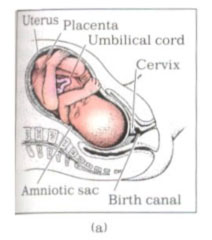









| ||||||||||||||||||||||||||||||||||||||||||
Apgar Scoring for NewbornsA score is given for each sign at one minute and five minutes after the birth. If there are problems with the baby an additional score is given at 10 minutes. A score of 7-10 is considered normal, while 4-7 might require some resuscitative measures, and a baby with an apgar of 3 and below requires immediate resuscitation. |
|
Sign |
0 Points |
1 Point |
2 Points |
|---|---|---|---|---|
A |
Appearance (Skin Color) |
Blue-gray, pale all over |
Normal, except for extremities |
Normal over entire body |
P |
Pulse |
Absent |
Below 100 bpm |
Above 100 bpm |
G |
Grimace (Reflex Irritability) |
No Response |
Grimace |
Sneeze, cough, pulls away |
A |
Activity (Muscle Tone) |
Absent |
Arms and Legs Flexed |
Active Movement |
R |
Respiration |
Absent |
Slow, irregular |
Good, crying |
NBAS
The Neonatal Behavioral Assessment Scale (NBAS), also known as the Brazelton Neonatal Assessment Scale (BNAS), was developed in 1973 by Dr. T. Berry Brazelton and his colleagues. This test purports to provide an index of a newborn's abilities, and is usually given to an infant somewhere between the age of 3 days to 4 weeks old.[1] This approach was innovative for recognizing that a baby is a highly developed organism, even when just newly born. The profile describes the baby's strengths, adaptive responses and possible vulnerabilities. This knowledge may help parents develop appropriate strategies for caring in intimate relationships to enhance their earliest relationship with the child.
The Brazelton scale produces a total of 47 scores, of which 27 are behavioral related and 20 are elicited responses. These scores measure a variety of areas including the "neurological, social, and behavioral aspects of a newborn's functioning." Additionally, "factors such as reflexes, responses to stress, startle reactions, cuddliness, motor maturity, ability to habituate to sensory stimuli, and hand-mouth coordination are all assessed."
The consequential validity of the Brazelton scale has been very favorable, providing a considerable research base. This scale has been used widely as a research tool as well as a diagnostic tool for special purposes.
Despite the influence of the Brazelton scale, it has some drawbacks. The biggest is that no norms are available. Therefore, as examiners and researchers say that one infant scored higher than another one, there is no standard sample with which to compare. Further, the scores are not completely understood; further testing is required. As for validity, it has "poorly documented predictive and construct validity." It also does not do a good job at predicting later intelligence, although the scale is supposed to assess the "infant's role in the mother-infant social relationship" from which high scores are supposed to presume "high levels of intelligence.".
Therefore, the value of the test is as a research tool and a supplement test to medical testing procedures. But as a predictor of future intelligence, it is very unsatisfactory.
|
Growth & Development Robert C. Gates 
|


